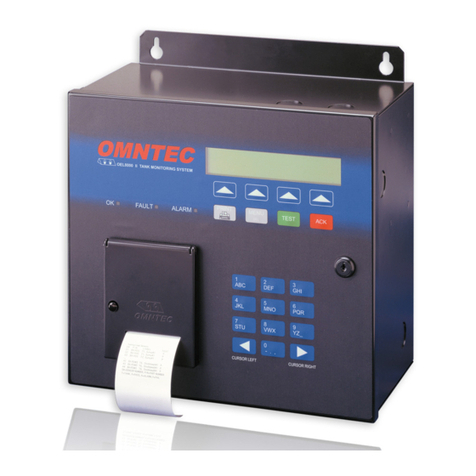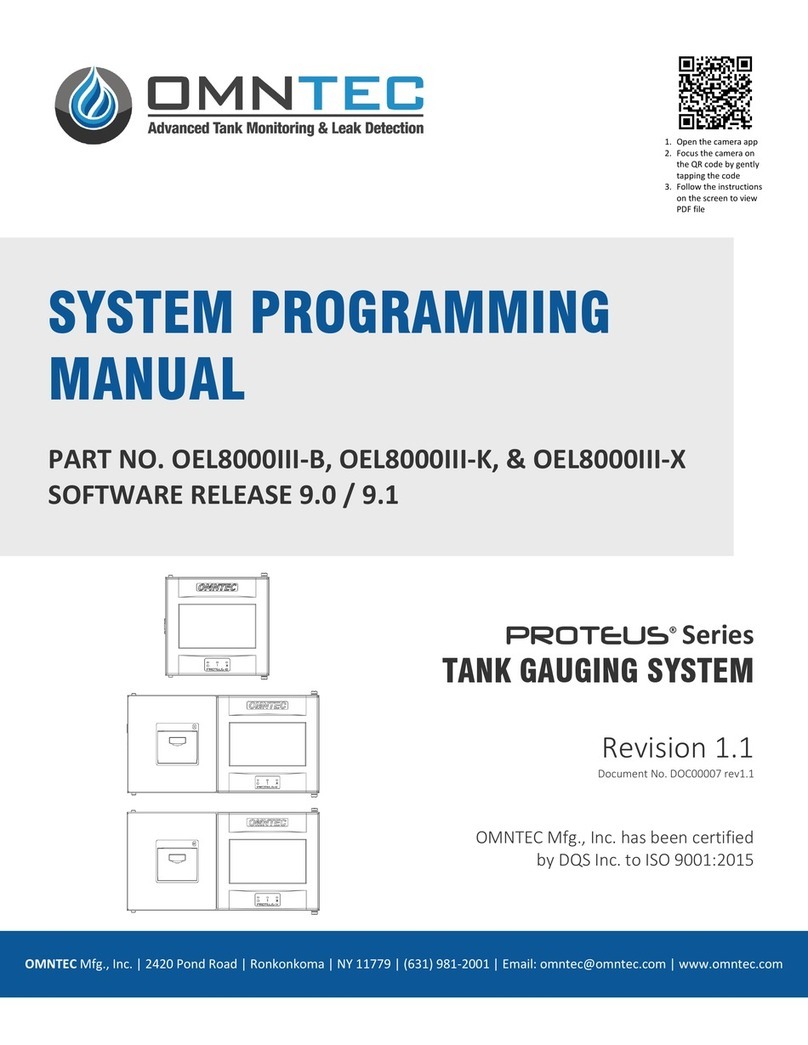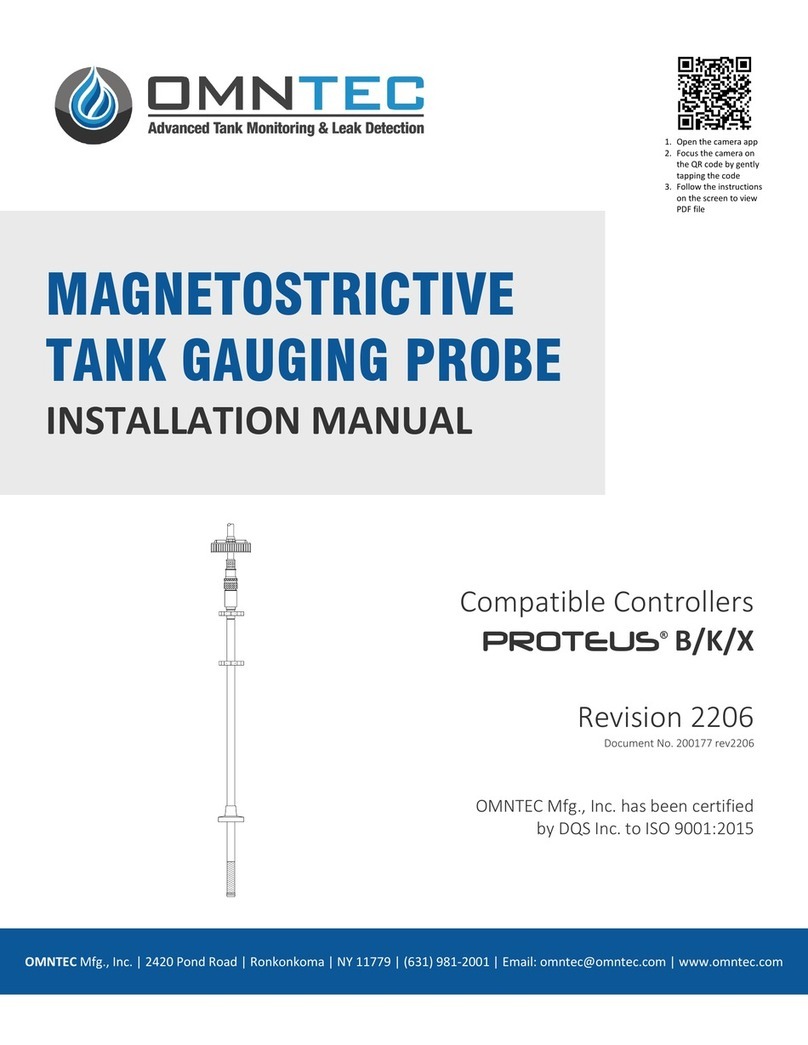
6
The process insertion fitting is a specially modified bored-through Swagelok tubing adapter. An
internal o-ring groove incorporating a back-up ring has been machined into the fitting to provide a
pressure seal with the probe body during process insertion and retraction. The process insertion
fitting is an integral part of the FuelCheck®probe and cannot be removed in the field.
The Insertion Tool adapter en-
ables the use of the high pressure
probe Insertion Tool in the event
that the probe must be inserted or
removed from the process at
pressures exceeding 300 PSI.
Even if the process pressure is
never expected to exceed 300
PSI, it is recommended that this
adapter be used as a safety fea-
ture so that the probe could be
removed in the event of an emer-
gency.
The top end of the probe is at-
tached to a length of 3/8” OD
stainless steel flexible conduit
(“armor”) providing protection for
the fiberoptic probe lead. Stan-
dard length is 120”. This armor is
terminated in a ½” MNPT conduit
fitting which is attached to the
probe junction box. The fiberoptic
leads are terminated with ST type
fiberoptic connectors which attach
to the fiberoptic interconnect cable
leading to the FuelCheck®Con-
troller.
A fiberglass junction box (J-Box) is
provided to protect the fiberoptic
connection between the probe and the fiberoptic interconnect cable. This J-box is normally the
terminus of a rigid or EMT conduit installed to protect the fiberoptic interconnect cable.
Probe Location Considerations
FuelCheck®probes can be installed through any full-opening valve with an inside diameter (ID)
of 1” or larger; however, several considerations should be observed in order to provide optimum
performance. It is strongly recommended that the probe be installed such that its tip not protrude
past the inside wall of the pipeline. If the probe extends into the pipeline, damage to the pipeline
and probe can result by pigging the line without removal of the probe. If the probe location is not
to be pigged, the probe can be installed into the pipeline to the desired length but fluid velocity
Figure 4
Process Insertion O-Rings


































